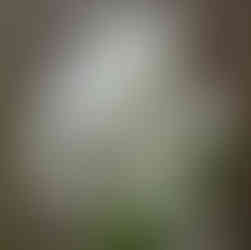Bulbs Part I: Fall Planting
- SEB
- Nov 6, 2019
- 3 min read
It is time to plant spring blooming bulbs. Bulbs are easy to plant and even easier to grow.
Before we dive into the simple matter of how to plant let's take a moment to discuss some basic bulb facts.

Simply put, a bulb is a plant that contains its entire lifecycle within its own container. If you were to cut open a bulb you would be able to see its flower bud, leaves, and roots. Bulbs are miniature storage containers, they just contain life rather than boxes of high school memorabilia. The term "bulb" is generally used to describe any plant that stores its own food in fleshy underground containers. Many of our favorite "bulbs" are not actually "true bulbs". For example: tulips and daffodils are true bulbs, crocus and gladiolus are corms, anemones and caladiums are tubers, dahlias and tuberous begonias are tubers, and cannas and lily-of-the-valley are rhizomes. To keep things simple, we will use the term "bulb" to refer to all the above mentioned plants.
Below are a few helpful websites that will take you even deeper into the world of bulbs.
We plant spring blooming bulbs in the fall. These hardy bulbs require a period of cold to activate the process of flowering in the spring. In fact, the majority of bulbs that are planted in the fall are extremely hardy and will live year after year. Many of the bulbs that are planted in the spring however are not winter hardy and will need to be lifted in the fall if you want to save them. Look for "Bulbs Part II" on the blog to learn more about lifting tender bulbs.
The hardest part of planting bulbs is deciding on which bulbs to plant. The variety is immense. Daffodils, tulips, crocus, anemones, Dutch iris, hyacinths, grape hyacinth, jonquils, alliums, fritillaria, wood hyacinths, and snowdrops are some of the more popular bulbs. Now imagine almost every color in the natural world. There are your options.
Before you decide on which bulbs you want to plant it may help to first decide where you will plant them. Bulbs look great planted en masse, around trees and shrubs, amongst perennial beds, along sidewalks and driveways, and even in containers. As long as it is a location that has soil and sunlight you can grow most any bulb. Keep in mind when planting how tall the plant will get and when it will bloom. Many early spring blooming bulbs are great in existing garden beds because they will come up and add color before your other plants begin to wake up from their winter dormancy.
Once you have decided on where you're going to plant and what you are going to plant it's time to get dirty. Bulbs are extremely easy to plant. There are just 3 simple steps.
1. Dig - Dig a hole according to the directions on the package.
Roughly 2 to 3 times the size of the bulb.
2. Drop - Drop the bulb in the hole and cover firmly with soil.
3. Done - Tada! You're done. Almost. Make sure you give the bulb a good drink of water.
It really is that simple. You can fertilize bulbs when planting by adding a scoop of bone meal or blood meal to the soil and mixing gently before placing the bulb. A yearly application of compost or manure will also help your bulbs. Taking a soil sample to your local County Extension office will give you a more detailed analysis on the exact nutrients needed to help your bulbs flourish.
If you don't have space in the ground to plant bulbs, you can plant them in a pot. Plant one type of bulb for a blast of color or for season long color plant different kinds of bulbs for successive blooms. Planting for successive blooms can be thought of as "lasagna planting". You plant the bulbs at various levels, layering early blooming bulbs on top and late bloomers in the middle or bottom. Dig Drop Done has a great how-to on planting bulbs in containers.
A tutorial from BBC Gardeners' World Magazine on layering bulbs in a pot. If you are not familiar with this show and website check them out. They have a ton of helpful information.
Happy planting!
“Bulbs need so little and give back so much. They start off homely, even ugly, and return transformed.”
– Lauren Springer Ogden, American garden writer and designer





























